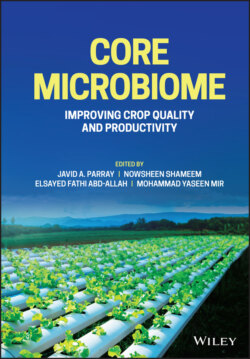Читать книгу Core Microbiome - Группа авторов - Страница 56
3.9 Conclusion and Future Consensus
ОглавлениеMedicinal plants have been gaining much importance in developing countries due to the re-emerging health concerns from the rising costs of prescription drugs for maintaining personal health. A WHO report stated that about 80% of people rely on herbs. The quality of medicinal plant products is affected by biotic and abiotic stresses. Microbes in the soil improve medicinal plant growth and quality, which explains the increasing research interest in medicinal plants and their interaction with rhizosphere microbes for crop improvement, withstanding abiotic stresses. PGPR are a great option to improve the quantity and quality of medicines and plants. However, it mainly depends upon the selection and identification of bacteria, streptomycetes, fungi, and microbes and their interaction with plants that could help improve growth and withstand harsh environmental conditions as well as high-quality secondary plant metabolites production. Plants react to different stresses, and microbe-based mitigation approaches necessitate studies for gaining a deeper insight into the molecular, physiological, biochemical, and ultra-structural composition. These studies require different approaches, i.e. genomics, metagenomics, and molecular proteomics for a clear understanding of behind-the-scenes plant–microbe interactions. As the medicinal product value and requirement keep increasing day by day, we strongly recommend greater attention to keener studies on the selection of microbes, their characterization, and plant–microbe compatibility when introduced into the new environment to mitigate abiotic stress in medicinal plants.
